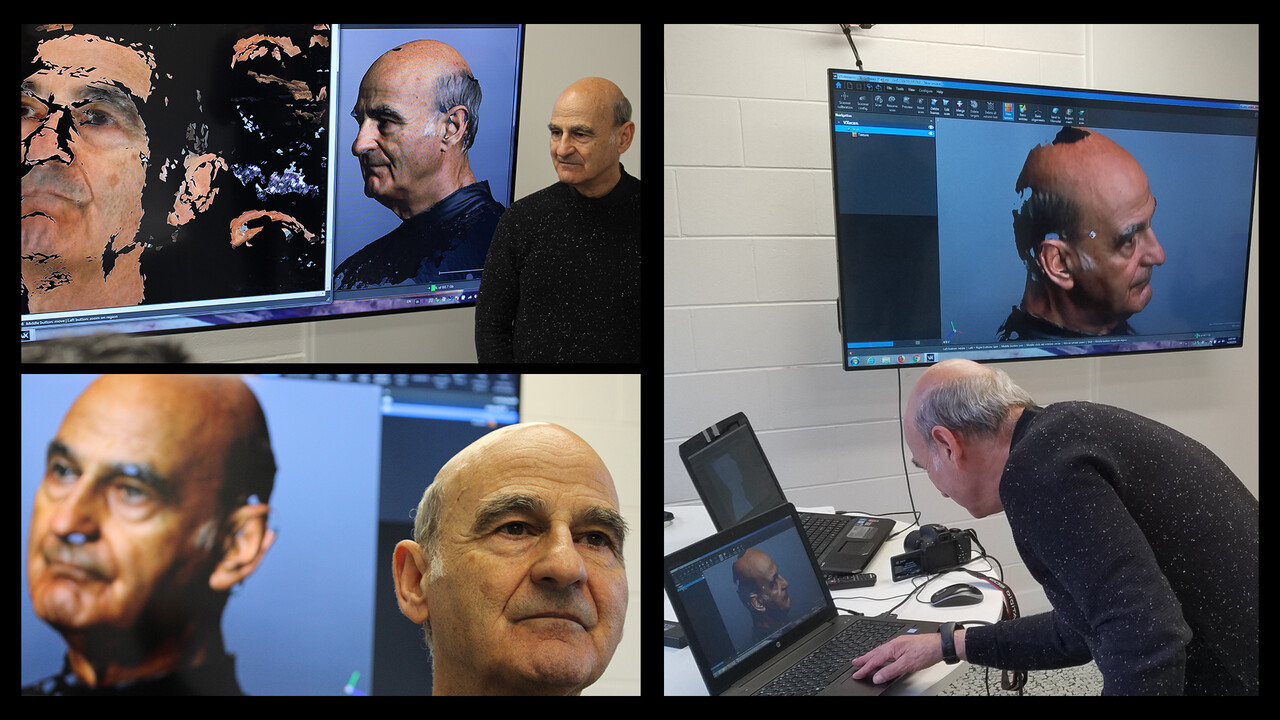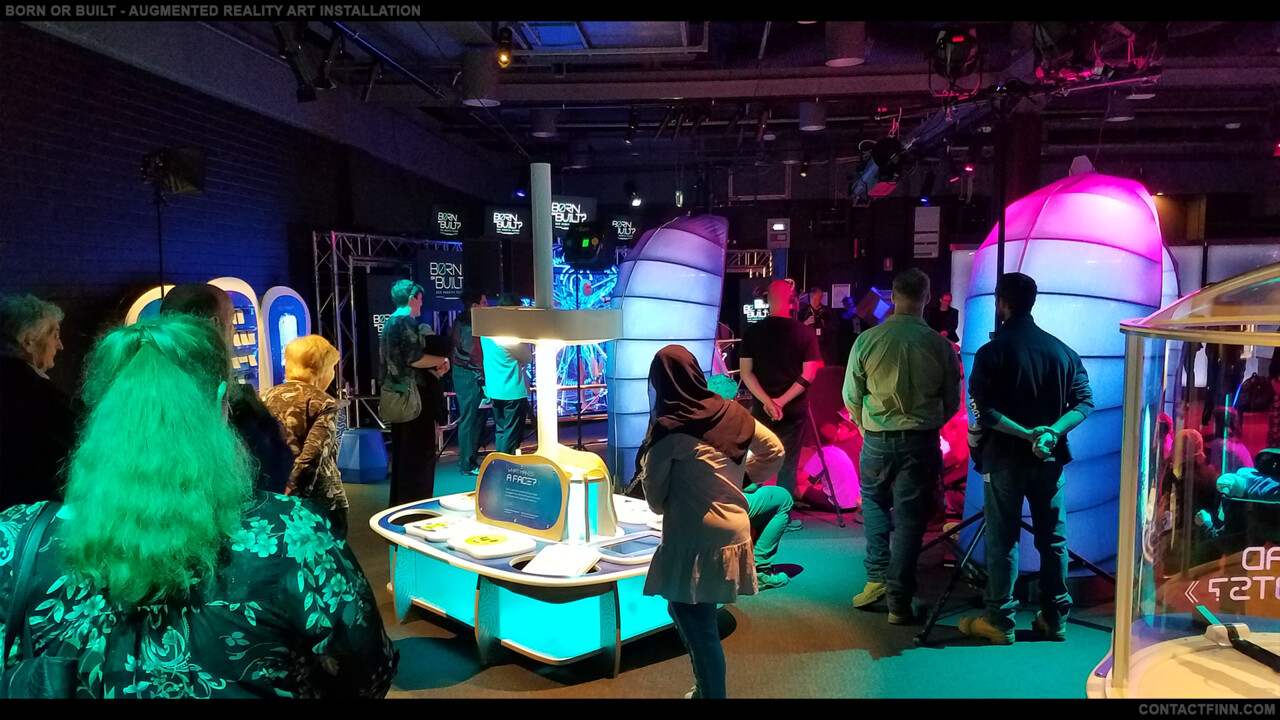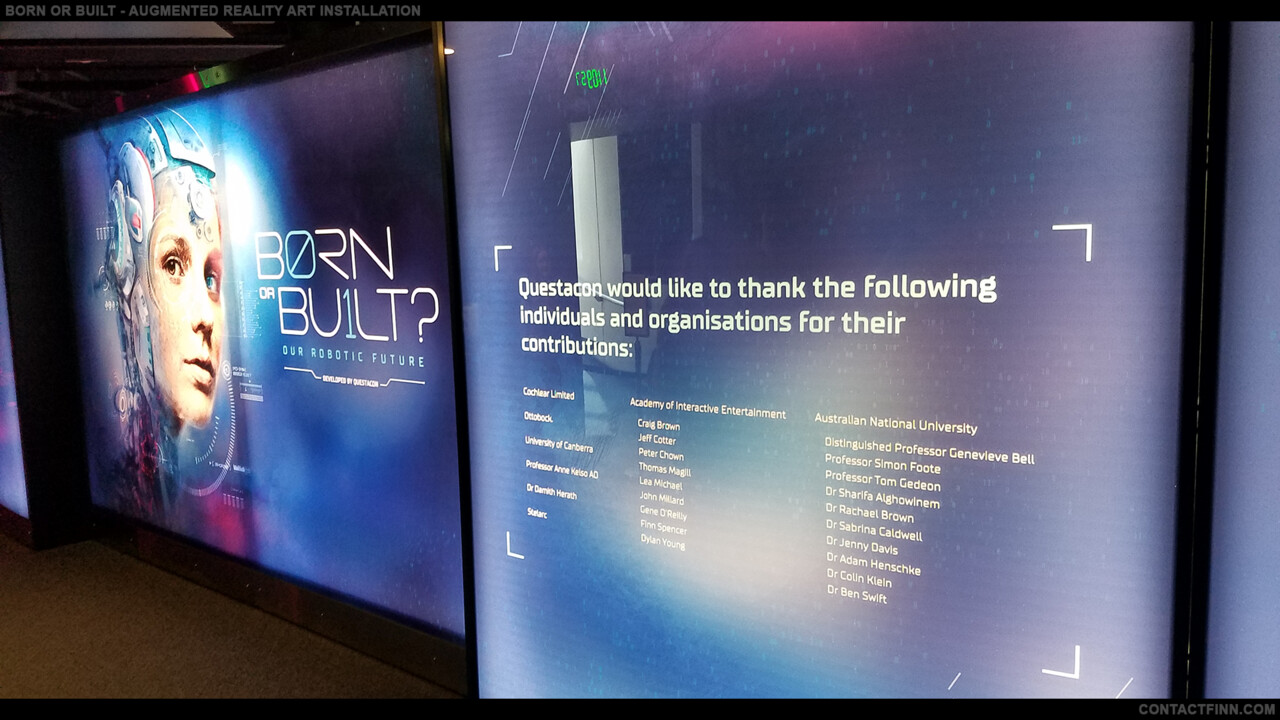Hello Everyone,
Back in October of 2018, I had the opportunity to work with Questacon, AIE, and University of Canberra. I was also lucky to be able to be involved with 2 projects for the same exhibition. This blog post is part 1 of 2, It will become too long to discuss it in the same post, so it will be separate.
I was called in to scan the head of a performance artist "Stelarc" for an exhibition called Born or Built. The Exhibit is now open to the public and is cleared with any art embargo so I can talk about the behind the scenes and how I have been involved.
Here is a summary of what the exhibition is about from their website:
"The exhibition is all about what is it meant to be human. It examines the similarities and differences between humans and machines, explores our overlapping shared future, and questions the choices we will make to get there."
The location of this exhibition is at Questacon (The National Science and Technology Centre), which is located in Canberra Australia. However, the exhibition is designed to travel and be moved around to various locations in Australia and internationally.
I was brought in during the first initial stages of the project to assist in capturing a 3D Scan of Stelarc's head when he was in town. These files were then processed to be passed onto the talented character artist Gene O'Reilly. Who undertook clean up, facial rigging, and blend shapes. John Millard who played the programming role put it all together and gave it life within Unity.
The above picture is what the final result came out as, where the digital head will be running within Unity3d on an LCD screen mounted to a robotic arm that can detect movement and sound in relation to its own location and therefore interact with the people around it. Additionally, the head will respond to questions inputted via a keyboard somewhere located next to the art installation.
You can see further details within the timestamped video embedded below.
Jumping back to BTS,
With the assistance of Damith, we used a handheld scanner called Go!SCAN 3D which was borrowed from the University of Canberra engineering department to do initial scans and capture the mesh and texture. Because of my previous experience with photogrammetry, I was tasked to make sure the data was collected correctly and we had multiple options to pursue if one of the capture methods failed.
I only had a small time frame to test the equipment, 30 minutes before Stelarc arrived, so I made sure to capture images with the Canon 5D to support the scan if the texture resolution wasn't good. This ultimately was a good idea as the texture resolution and mesh integrity weren't all the best (Lighting conditions were quite poor).
These were some of the results, Go!SCAN 3D produced, with very varied results. not exactly ideal for high-resolution texture capture however the overall mesh capture seemed to work. I did about 3 captures of the face, each had severe mesh tearing. Although it was a cool learning experience to try out the laser scanning setup and see how everything comes together.
At this point in the project, it was handed over to Gene O'Reilly, which he worked his Zbrush and substance painter magic and repaired the model. You can check out his post on Artstation here, where you can see a breakdown of the final model.
Credits above ^
Overall it was fun to work on this project and help contribute to the overall exhibition and congratulations to everyone involved, In part 2, I will talk about another project for Born or Built. An augmented reality project that raises questions on what makes you human.
See you all next time,
Finn




